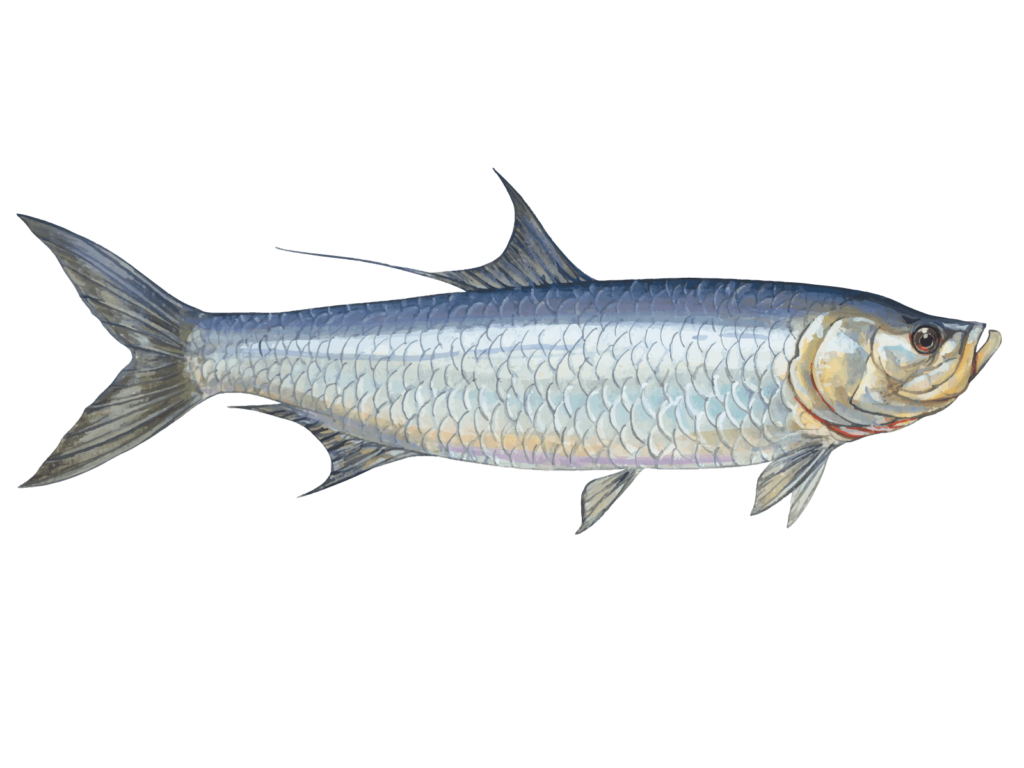Tarpon, also known as the “Silver King,” is a popular game fish that can be found in coastal waters, estuaries, and even freshwater rivers. They are known for their acrobatic leaps and runs, making them a favorite among anglers. However, desite their reputation as fierce predators, their teeth might surprise you.
Many people believe that tarpons have large, sharp teeth that can cause serious harm. However, this is not the case. Tarpon have small, densely packed teeth that are called “villiform.” These teeth are needle-like and feel like sandpaper to the touch.
Unlike other large fish, tarpon do not use their teeth to tear apart their prey. Instead, they use their large mouths to engulf their prey whole. The villiform teeth on their jaws, vomer, palatines, pterygoids, tongue, and skull base are used to grasp and hold onto their prey, not to chew it.
This is why it is relatively safe to feed tarpon by hand. Visitors at Robbies Tarpon Feeding in the Florida Keys have reported no harm in being bitten by the tarpon as they feed them. Tarpon feed on small baitfish, crabs, and shrimp, and they use their small teeth to hold onto their prey as they swallow it whole.
Despite their small size, tarpon teeth are still effective in helping the fish catch and hold onto their prey. They are designed to be efficient, not dangerous. This is why many anglers use artificial lures or flies when fishing for tarpon, as they can easily hook the fish without causing any harm.
Tarpon teeth might not be what you expect from a large game fish. They are small, densely packed, and feel like sandpaper to the touch. However, they are still effective in helping the fish catch and hold onto their prey. So, the next time you encounter a tarpon, don’t be afraid of their teeth – they are harmless.
Does Tarpon Fish Have Teeth?
Tarpon fish have teeth, but they are extremely small and densely packed. They have villiform teeth on their jaws, vomer, palatines, pterygoids, tongue, and skull base. These teeth are not visible unless you look closely. Despite their enormous mouth, often exaggerated by anglers, tarpon have very small teeth that are not used for biting or chewing. Instead, they are used for grasping and holding onto prey. Tarpon are primarily a game fish and are known for their acrobatic jumps and strong resistance when caught.

Can Tarpon Bite You?
Tarpon can bite you, but their tiny teeth called villiform are not sharp enough to cause massive damage. These teeth feel like sandpaper and are not designed to tear flesh or cause harm to humans. In fact, visitors to Robbies Tarpon Feeding in the Florida Keys have reported no harm in being bitten by the Tarpon as they feed them. However, it is important to note that any wild animal, including tarpon, can become unpredictable and potentially dangerous if they feel threatened or provoked. Therefore, it is always advisable to exercise caution and respect when interacting with these creatures.
What Do Tarpon Teeth Look Like?
Tarpon teeth are characterized by their small and needle-like appearance. They are densely packed and cover the tarpon’s entire mouth, including the jaw and tongue. These teeth are known as “villiform” and are typically pointed and sharp. They are arranged in rows and are quite numerous, making it easy for the tarpon to catch and hold onto its prey. Despite their sharp appearance, tarpon teeth are not dangerous to humans.
Are Tarpon Teeth Sharp?
Tarpon teeth are not sharp. Instead, their mouths have a rough texture similar to sandpaper. This makes it relatively safe to feed tarpon by hand, as there is little risk of injury from their teeth.
Conclusion
Tarpon teeth are unique in their design and function. Despite their enormous size and reputation as a fierce predator, tarpon have small, densely packed teeth called ‘villiform’ that resemble sandpaper. These teeth are not sharp or dangerous, making it relatively safe to feed tarpon by hand. Although tarpon teeth may not be suitable for tearing flesh, they are effective in holding onto prey and grinding down smaller organisms. Tarpon teeth are a fascinating adaptation that allows these fish to thrive in their environment and continue to amaze researchers and anglers alike.
